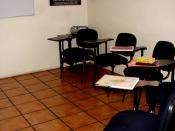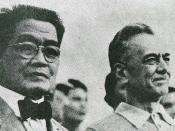The task of choosing official languages for East Timor and the Philippines was extremely difficult; both countries were unwilling to promote languages, which their country had negative associations with. A nations cultural healthy depends on the preservation and fostering of all its indigenous Languages and dialects, small countries need many Languages to survive and prosper economically. East Timor and the Philippines choice of official languages shows the world that after years of oppression under both Indonesian and British rule respectively, both countries are making a conscientious effort to look optimistically into the future and put the past behind them.
The Philippines much like East Timor had been occupied and controlled by different colonial powers. The Spanish established occupation in the Philippines during the 1500's. Spanish, by law, had to be taught to all native Filipinos and knowledge of the Spanish language was mandatory to hold public office. Native dialects including Tagalog remained as the Spanish did not try and eradicate them.
By the 1880's many Filipinos were being educated in foreign universities. Eventually however realising that they were being exploited by there colonial powers, the first revolt and move towards political independence occurred in 1896. In 1898, Emilio Aguinaldo, one of the leaders of the revolt declared independence for the Philippines. However while this was happening the Spanish were formalising the transfer of ownership. Handing over the Philippines to America. Unlike the Spanish, the Americans


